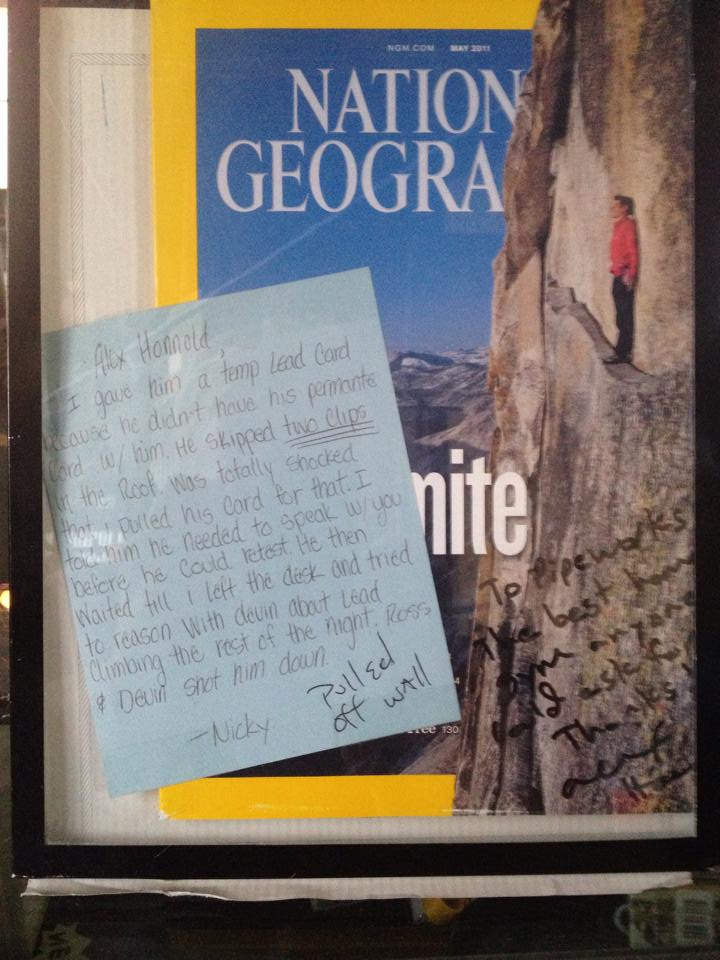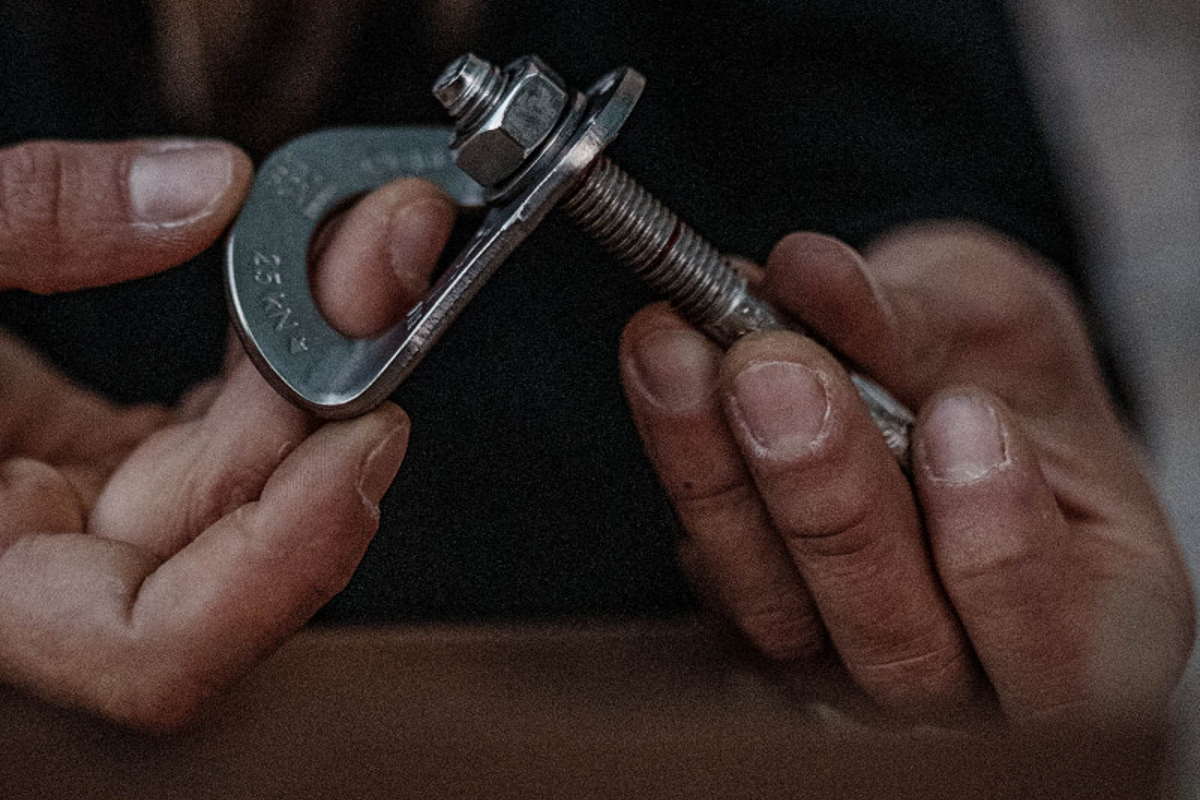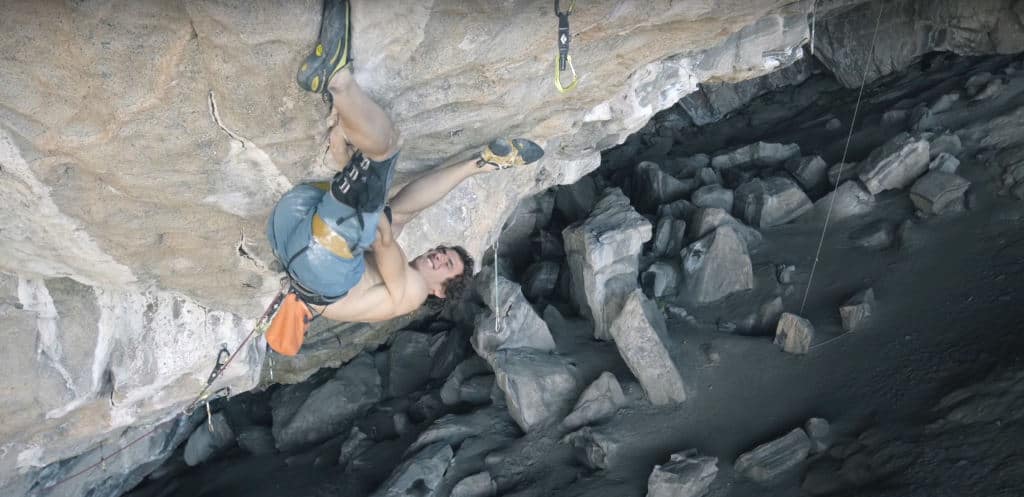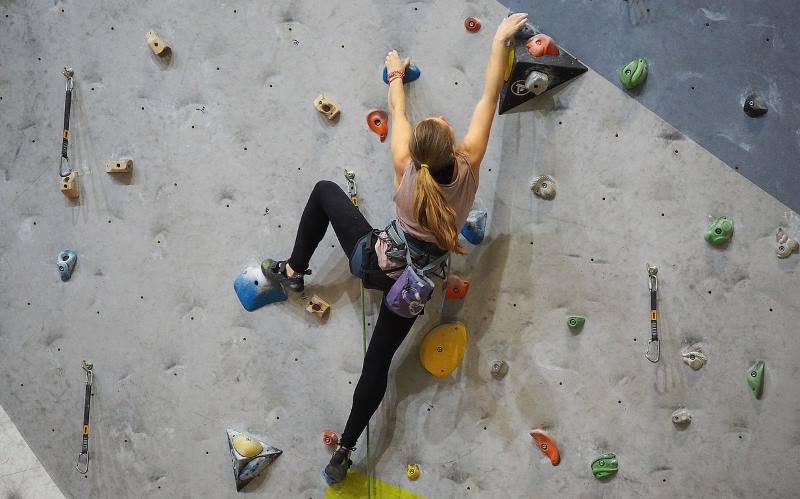After desperately struggling through a series of hard moves you look down to realize you literally can’t see the last bit of protection attaching you to the wall. Welcome to the runout – climbing’s literal make or break situation.
What Is A Runout?
A runout is a part of a route where there isn’t any protection for a while below you. It happens when a route is sparsely bolted or there isn’t be anywhere to place a cam. “Running it out” is common on classic routes and sometimes hard sport overhangs.
Sometimes you might be too pumped to place gear and see there are better holds higher. Here you might risk a runout instead of stopping to try and place some fiddly gear and getting pumped out. “When in doubt, run it out” is a popular – if misguided – phrase in the climbing world.
What Is Considered A Runout?
It depends on the area and the person. Most modern sports routes are pretty well bolted and it’s unlikely you ever be more than two or three meters above a bolt. A runout might mean a big, scary fall but still a safe fall if it’s caught probably by the belayer.
Generally in sport climbing the first bolt will be about 2.5-3 meters (6.5-10 feet) off the ground, the second will be around a meter or so from there, then the bolt spacing gets longer.
The idea is that a low first bolt won’t stop you hitting the ground. A high second bolt risks hitting the ground still so it’s placed fairly close. As you go higher the risk of taking a ground fall decreases – so a fall might be longer but still “safe”.
In trad, runouts are par for the course on many routes. An area where gear fits but probably wouldn’t take a fall might also be considered a runout.
Are Runouts Dangerous?
It depends on the route but in general yes. At least more so than a smaller fall. Falling while rock climbing is more common and less dangerous than most onlookers would think. On a flat bit of wall without jutting hazards you might take a 10-foot whipper with no problem.
Hazards and your ability to judge them are more important here.
Overhangs tend to look scary but falls allow you to decelerate and just leave you hanging safely in mid-air. Running out a bumpy slab might leave some nasty grazes. A runout above a ledge could mean a hard fall feet first, followed by a difficult rescue. Running out with a rope grazing over an arête (sharp rock edge) could lead to the rope cutting.
Why Do Routes Have Runouts?
Trad Climbing
Trad ethics boil down to: climb the rock as it is. Some routes are just not very easy to protect because fo the features. Placing a bolt in certain areas, even for lowering – especially areas like Snowdonia or Stanage in the UK – will literally lead to exclusion from the community and the bolt being swiftly removed and covered up.
Runouts where no protection is possible or where that protection would most likely fail are in-grained as part of trad climbing. Rock isn’t uniform. Some easy climbs have terrible protection and some hard routes are super safe. The only normally accepted bolts are for lowering and should be as incognito and simple as possible.
Even in areas that have lots of bolts, if a route which is easily protected by trad gear it’s argued that there is no need for bolts, so most stay as trad. There are plenty of big crack climbs with a perfect placement the entire way. Really it boils down to local ethics and tradition.
In British trad grading the first part of the grade gives a rough idea of how well protected/dangerous the route is, with the second part of the grade being the hardest move. So an E8 is more “serious” than an E4 and may have a runout section where it’s impossible to place gear.
With US grading you might find an R or an X after the grade. These correspond with US movie ratings. An R on a climb means that chance for a big and possibly dangerous fall, maybe from a big runout section or a hazard on route. An X on a route means possibility of sever injury or death from the same or possibly gear pulling out.
Learn more – What Is Trad Climbing?
No Set Bolting Rules
Bolts only started to be placed regularly on routes in the 60’s and 70’s. Even as bolting became accepted, the ethics for how the bolts were placed were hotly debated. Rappelling in to find and bolt a route was a new and controversial practice where previously bolts were placed on lead with a messy fall potential.
Since then there have been no set rules worldwide or even between some areas. There are many accepted practices – one of them being that the bolts should be of the highest quality and suitable for the area. Apart from that the placement and number of bolts really up to the bolter themselves.
Sometimes there are guidelines drawn up by organizations like the Access Fund or BMC. Mainly the local rules tend to be what not to do. For example using electric drills in Yosemite isn’t allowed but using a hand tool and hammer to create the bolt hole isn’t.
Generally bolters will first look for good rock and a safe placement. From there if it’s possible to place a bolt where clipping will be easy that’s always a plus. However, clipping positions and bolt placement are subjective to the climber and the body type.
Bolts Cost Money – Who Knew?!
A standard stainless steel hangar costs around $3, with the bolt itself about $6. A simple two-bolt anchor with a chain and single lowering ring is around $30. For a 10 bolt route and rings that’s $120! Adding a nicer chunky, replaceable lowering biner or pigtail system adds another $10 to $20.
That doesn’t take into account the cost of the gear to get up there and sit in place to bolt, the ruined drill-bits and gear plus all the time. Sometimes painting bolts to match the local rock color is needed. Then if you’re anywhere near the sea, using glue-ins and possibly titanium metal are a must and will at least double the cost per route.
Routes also need maintenance. Top-toping through anchors ruins them fast and could mean an anchor only lasts 5-10 years. Bolts sometimes rust or rock flakes off. An area with a lot of routes takes a lot of work to keep safe.
Donate to your local bolt fund!
Skipping Bolts
The only reason you might skip a bolt is outside on a decently overhanging route. Being high off the floor helps reduce the chance of hitting the floor or rock on the way down can. Pro’s do this fairly commonly when redpointing the hardest routes but normally on the crux section only to save a little strength.
Old School Ethics
Commonly in the US there are lots of older, classic routes with really sparse bolting. This comes from an era where routes were only mean to be climbed with traditional protection but where there are unprotectable sections.
If a route just couldn’t be protected any other way a bolt might be placed – but as few as possible. That ethic continued and there are areas where even talking about adding bolts to classics for safety reasons is vehemently opposed.
Some routes are even labelled as sport but it’s understood that placing trad gear is necessary. It is what it is. Many of the classic’s in the US – Yoesmite as a great example – involve a mix of sparse newer bolts, trad placements, and clipping rusted old pegs that were placed back n the 60’s. Many would call these routes sandbags nowadays.
Runouts On Easy Routes
Depending on the area, sometimes the easier routes can have less bolts than harder ones. To most this seems the opposite to what you’d expect but to others it makes total sense.
As most people that clean and bolt routes are regular climbers and climb harder, the easier routes are mainly warmups for them. If you were bolting for your area, your friends, and thought certain routes were just not going to be fallen on – why would you add lots of bolts?
This isn’t always the case. Sometimes the easier routes were bolted years before the hard routes and that amount of bolts was considered plenty for the time. Newer routes then get put up and newer bolting ethics allowed for more bolts.
Bad Rock
Sometimes routes have bands of good rock where bolts are placed easily and safely. Then there are bands of softer, more porous and breakable rock, or crackly shale seams that break easily. Placing bolts here can be counter-productive.
Clipping a bolt that would probably fail could lead to a more dangerous situation where a belayer and climber wouldn’t expect such a large drop. Here bolters just place bolts where the rock will (likely) hold.
How To Deal With Runouts?
Apart from backing off or knowing when you’re in too deep, dealing with runouts is mostly about knowing how to fall and being ready to if you must. Being confident with what might happen if things go wrong mean you have less to worry about and can concentrate on the climbing and not the possibilities.
Practice taking smaller falls regularly. Gym climbing is perfect for training yourself to be comfortable knowing you might take a fall and falling properly. The more falls you have done safely the more likely you’ll be in the right position and ready for any impact with the wall.
Experience with different types of falls will also let you feel more comfortable. Again it’s all about personal judgement and assessing risks. In between being totally safe and outside of your comfort zone is the “learning zone”. Get used to finding that place to expand it.
Trust Your Belayer. Climb with people you feel confident with. It should be standard practice that you see your belayer belaying someone else, you can talk to them about what you expect when you’re climbing, and have clear ways to communicate to each other.
Over time people get to know what works for their partners and when they look like they’re struggling. Commonly you’ll hear things like “watch me here” to let someone know when a fall might happen.
You should never have to look down to know your belayer is paying attention. If you ever doubt them, have a chat and say what’s bugging you without accusing. Climbing with a great belayer makes such a big difference.
More Climbing Jargon Explained
What Does Climbing Onsight Mean?
What Is Beta In Climbing?
What Is A Sandbag In Climbing?
A Word On Bolting
Bolters are climbing’s unsung heroes and get way too much flack for doing something others wouldn’t even think to do.
Your favorite crag probably has great access, routes free of loose rock, moss and foliage, and a nice clear pace to stand belay. It definitely didn’t look like that when it got found. Opening a crag means finding a place that’s often not easily accessible, checking out access, path making, route cleaning – then the bolting starts.
Bolters often buy equipment and bolts with money from their own pockets. They spend time learning to do things the right way, replacing expensive drills and bits, and thinking hard about the safest place to bolt while being able to clip properly.
The fact we turn up without having done any of this work or contributed in any way means we should be eternally grateful for anything they do. Don’t slag off a bolter because they didn’t do things the exact way you would have done if you had done it. Which you didn’t.
Got a problem with a route? Get involved in the community and see if there’s a way you can help – whether it be tagging along to learn and help, or to contribute to a re-bolting effort with the community’s consensus. At the bare minimum, support your local bolt fund regularly.
Runouts At Gyms – Skipping Bolts
Don’t skip bolts at the gym. It’s the dumbest thing we see regularly done (outside of terrible belaying) and it’s needlessly dangerous. Gym routes aren’t high enough off the ground to skip bolts and we guarantee no-one thinks you look badass doing it.
Gym routes are normally only 15 to 20 meters (50 to 65 feet) at the max with bolts normally every meter to meter and a half. Skipping even one bolt up until the 5th or so and then falling at the next almost assures you’ll hit the deck (or belayer/onlooker) for no good reason.
There is no reason for you to be running out a gym route. Even Alex Honnold got in trouble and had his lead climbing card pulled as a younger climber for skipping a couple of clips! This was back in his old hometown gym Pipeworks in Sacramento.

It would be a crime not to mention a great climbing podcast named after the feat itself. The RunOut Podcast is a great topical climbing from the brains behind the Enormocast and the Evening Sends.
It made the list of our Best Climbing Podcasts and is worth adding to the playlist on your next road trip/lockdown hangboard session.




